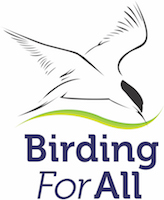An Englishman in Cuba
To see the more than 3 dozen Cuban endemic species, endemic races and other specials you have to cover a lot of ground. The Cuban Cays to the northeast, Camagüey in the centre of the island, La Güira to the northwest and, most famous of all Zapata to the south; and that’s without striking out east in the hardly ever fulfilled hope of seeing a Cuban Kite.
From a birding point of view this might mean many ‘wasted’ hours on a tour bus, but it does mean you get to see a lot of countryside, small towns and villages and form an overall impression of the country and its people. It struck me how like twitching it is to chase endemics in this way, except that I was being driven so could take in the scenery.
It is striking just how much of the land is in agricultural use with some vast plantation areas and many large ranches. Surely the Turkey Vulture population must have soared since the island was first settled as the tiny number of endemic mammals could hardly have sustained the present numbers. They must feast on dead cattle and occasional road kill unless they are happy, like the Cuban Black Hawk to stick to a diet of crabs.
I never asked our ever present courier whether there was intense use of chemicals on the sugar cane, banana trees or rice paddies but the overall ‘neat’ impression of such fields led me to suspect that this is the case. On the other hand most people living outside of the city seemed to cultivate their own vegetable garden or orchard and these had the look of having a lot of TLC rather than DDT. In all my travels I don’t think I’ve ever been anywhere as clean and tidy as Cuba – I never saw litter anywhere!
It was clear by the virtually standard house size that no one has a great deal, but equally clear that no one was dirt poor nor was there any evidence of a wealthy class. This surely must be the most level social stratification anywhere in the world. Maybe this explains the much-vaunted low crime rate – if there is no one to envy what’s the point of theft?
For everyone to eat, when importing is embargoed or limited, much of the land has to be under the plough or grazed by food animals. The ‘wild’ places never seemed that wild with human intrusion even into the wooded hills of La Güira and the swamps of Zapata, but there, and at other parks, its clear that impact is minimized and that wildlife is valued.
The landscapes of the La Guira National Park were, perhaps the most attractive we saw. One of the most striking was that at the caves which are preserved as a national monument because Che Guevara trained his freedom fighters there. Most visitors will probably be completely unaware that this is about the best place to see Cuban Solitaire, not that it is home to Cuban Martins and Cave Swallows and nesting La Sagra’s Flycatchers. Mind you, they might well hear and see their national bird, resplendent in its national colours of red, white and blue – the Cuban Trogon. A pair there was flying back and forth and calling constantly and even the most hardened urbanite would have noticed this large and colourful bird.
Across the island there are maybe half a dozen bird species you will see everywhere including the ubiquitous Turkey Vultures but its also quite hard to be far from Grey or Loggerhead Kingbirds, Common Ground Doves, Greater Antillean Grackles, Northern Mockingbirds, Cattle Egrets and a handful of other species. Like anywhere else of course, many species are in high densities, or confined to certain suitable habitats. Waders like wetlands worldwide and warblers like trees and bushes. The high numbers of some wood warblers struck me, some of which are resident, but many of which were passing through during my April visit.
American Redstarts and Cape May Warblers were everywhere and Common Yellowthroats abounded wherever water was close by. However, the incredible density of some birds, which seem few and far between in other nations, also struck me. For example, while reveling in views of a Ferdandina Flicker’s nest in open palm forest one could not help but be amazed at the number of West Indian Woodpeckers – perhaps as many as a dozen birds with a least three pairs holding territory all within few hundred square meters… clearly food must have been abundant and there was no shortage of suitable nest sites.
Like most of my trips the images that remain in my mind are mostly birding ones, but there was one other phenomena that I witnessed first hand there, having seen it on TV numerous times – land crabs migrating on mass to the sea… incredible.
But, of course, the top birds are seared on this birders soul. A glimpse of Zapata Sparrow and a scoped Zapata Wren half hidden in the reeds but in full song are two that will stay with me forever, for their rarity and charm.
Then there are a handful of birds with cryptic plumage that are special for their ability to blend seamlessly into the background. I will never, ever forget seeing a Cuban Nightjar, sat, asleep on her nest as the writer of the fieldguide to Cuba, Arturo Kirkconnell, took pictures. Watching Antillean Nighthawks over our ‘chalet’ at Playa Giron was excellent and watching a Cuban Pygmy Owl being mobbed was another. Best of all the denizens of the night was a Bare-legged Owl that popped its head out of its nest hole to see who was scratching the tree trunk. I have never seen such deep dark eyes before – if they had been a girl’s I would have fallen in love. Almost as cryptic was a young Ferdanina’s Flicker, so close to fledging that it was nine tenths out of its nest hole as mum refused to bring in food. I think many of my favourite birds are covered in fine stripes like an expensive polo shirt.
But, just like any red-blooded male, I was seduced by some of the flashier and more colourful birds. The national bird may not be the most spectacular of its tribe, there are more colourful Trogons to be seen – but I have seldom seen a Trogon species as often, as close and as vocal. Being within close proximity to a nest in Zapata meant we were treated to views of both male and female every few minutes over the course of several mosquito-filled hours.
Second on my list was one of the most wished for species on my life list – one I’ve wanted to see almost as long as I yearned for Wallcreeper – the diminutive Bee Hummingbird. It is a little jewel small enough to perch on the eyelashes of an Ostrich!
But top for me, and my second for the family having seen its Jamaican cousin a few days before, was Cuban Trogon. I had several excellent views over the course of ten days but the image which will remain for me all my days was of a singing Tody three feet from my nose… like a warbler-sized kingfisher but the brightest of lime green, the most scarlet of reds with hints of yellow and blue completing the primary colour palate. To see its bright red bill tremble with its song was, for me, the very essence of Cuba.





